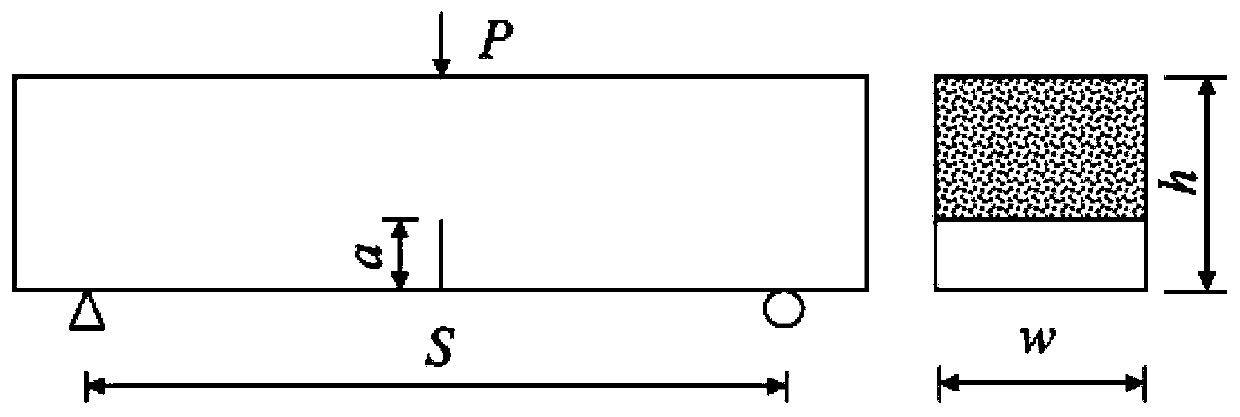Heterogeneous material crack stress intensity factor calculation method applying DIC technology
A stress intensity factor and heterogeneous technology, applied in the direction of testing material strength by applying stable bending force, testing material strength by applying stable tension/compression, and analyzing materials, can solve high roughness and stress field oscillation , affecting calculation accuracy and other issues, to achieve the effect of high efficiency, high precision and strong versatility
- Summary
- Abstract
- Description
- Claims
- Application Information
AI Technical Summary
Problems solved by technology
Method used
Image
Examples
Embodiment
[0037] A method for calculating the stress intensity factor of a crack problem in a heterogeneous material, comprising the steps of:
[0038] (1) Prepare standard compression or tension specimens of heterogeneous materials, and conduct unidirectional compression or tension experiments on the standard specimens to obtain the elastic modulus E and Poisson's ratio μ of heterogeneous materials.
[0039] The present invention needs to obtain the mechanical parameters of the material before calculating the J-integral of the crack problem in the heterogeneous material. For this reason, in this embodiment, concrete materials are taken as an example, and standard compression test pieces are prepared according to the "Standard for Test Methods of Mechanical Properties of Ordinary Concrete (GB / T50081-2002)", and the standard compression test pieces are unidirectionally compressed to obtain concrete material test pieces The mechanical parameters of the parts are: elastic modulus E=33.73GP...
PUM
 Login to View More
Login to View More Abstract
Description
Claims
Application Information
 Login to View More
Login to View More - R&D
- Intellectual Property
- Life Sciences
- Materials
- Tech Scout
- Unparalleled Data Quality
- Higher Quality Content
- 60% Fewer Hallucinations
Browse by: Latest US Patents, China's latest patents, Technical Efficacy Thesaurus, Application Domain, Technology Topic, Popular Technical Reports.
© 2025 PatSnap. All rights reserved.Legal|Privacy policy|Modern Slavery Act Transparency Statement|Sitemap|About US| Contact US: help@patsnap.com



